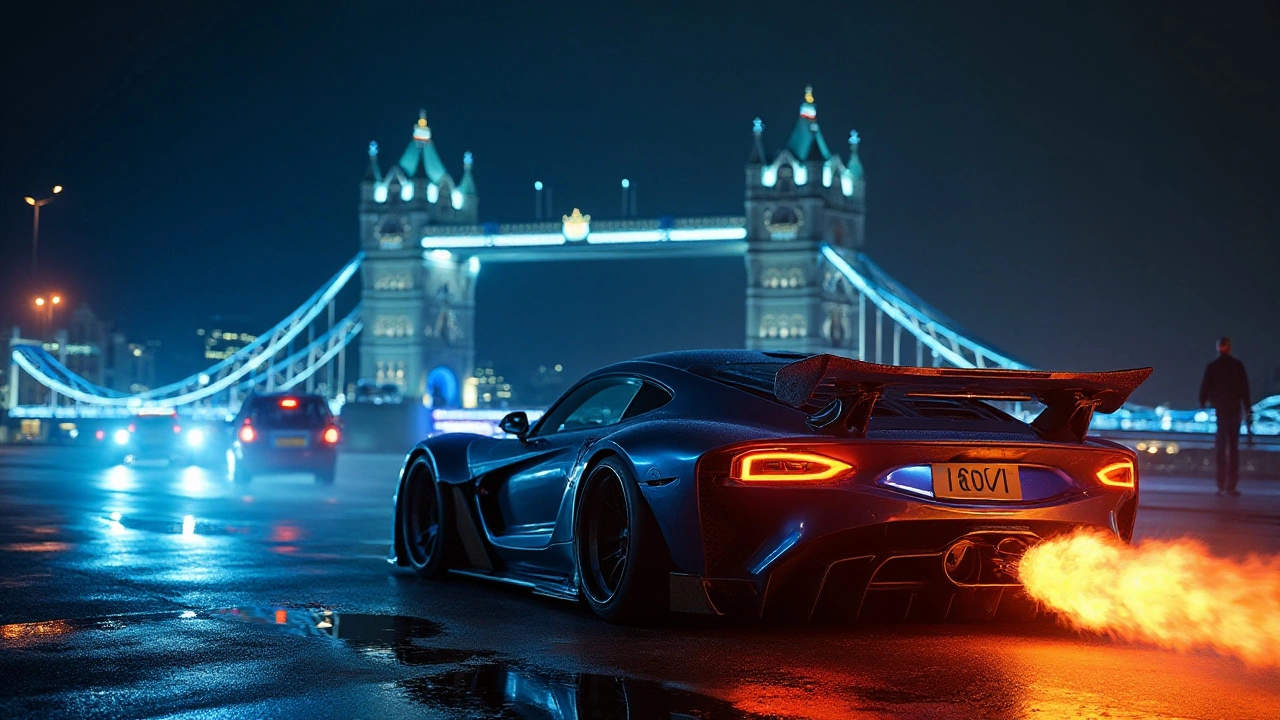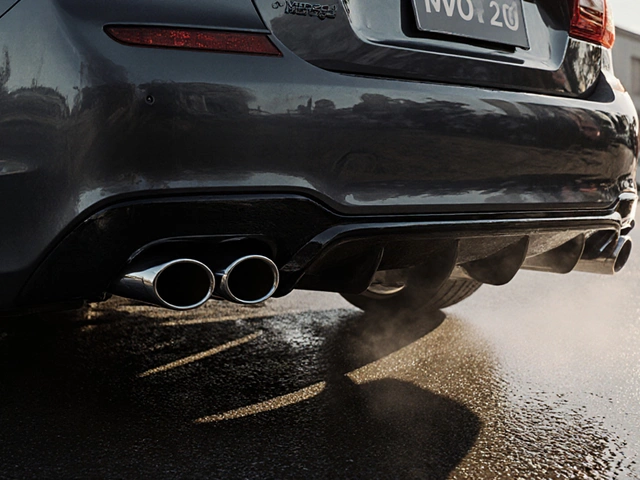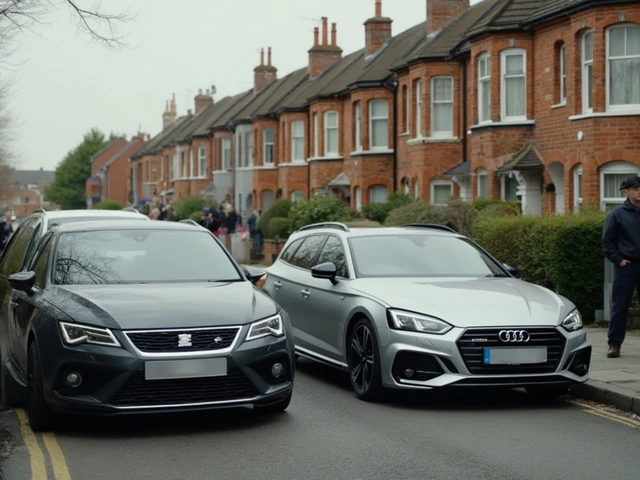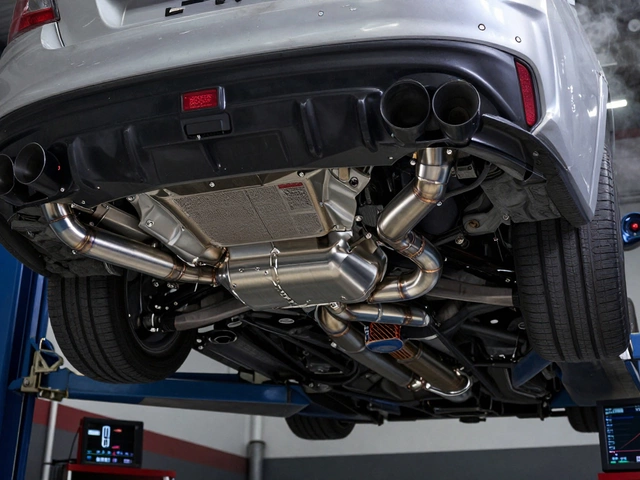Embarking on the quest to make your exhaust pop flames is as much an art as it is science. It’s not just about impressing friends or turning heads at car meets—it's a statement of craftsmanship and daring. But unlike a simple aesthetic upgrade, this fiery spectacle demands a solid grasp of mechanics and respect for safety.
This journey begins with understanding the fundamental components that will help you achieve that crowd-pleasing fiery burst. By tweaking fuel and ignition systems, selecting the right equipment, and following tested methods, car enthusiasts can safely transform their vehicle into a flame-throwing beast. However, remember: this enticing trick doesn't come without risks, and proper precautions are crucial.
- Understanding the Basics
- Fuel Adjustments and Ignition Timing
- Choosing the Right Components
- Safety Measures and Precautions
- Real-world Tips and Advice
Understanding the Basics
Every car enthusiast knows that making an exhaust pop flames is not merely about the thrill. It's also a testament to one's understanding of automotive engineering. Before you dive into complex modifications, let's address the fundamental concepts that govern this sizzling feat.
How It Works
At its core, making your exhaust pop flames involves unburnt fuel igniting as it exits the exhaust system. This phenomenon occurs when excess fuel is present in the exhaust and is ignited by the heat of the exhaust system. A rich fuel mixture combined with the right ignition timing can result in this dramatic effect.
Key Components
- Fuel System: A rich air-fuel mixture is essential. Tuning your car to inject more fuel than usual allows for unburnt fuel to flow into the exhaust.
- Ignition System: Adjusting your ignition timing is crucial. Retarding the timing allows the fuel-air mixture more time to burn, resulting in leftover fuel that can ignite in the exhaust.
- Exhaust System: A clean-flowing exhaust system, often with aftermarket modifications, helps facilitate the flame-throwing process. High-performance headers and catalytic converter removal are common adjustments.
Fuel Types
While regular petrol can suffice, some enthusiasts opt for high-octane fuel or race fuel to enhance the effect, as they are more volatile and burn hotter.
Basic Modifications for Beginners
For those new to car modifications, it’s advisable to start simple:
- Install a Flame Kit: This aftermarket kit is specifically designed to create exhaust flames. It includes a spark plug assembly that's installed in the exhaust tip to ignite excess fuel.
- Manual Tune: Adjust your carburetor or fuel injection system to allow excess fuel through to the exhaust.
- Ignition Coil and Spark Plugs: Upgrade these components to ensure a hotter spark which can assist in igniting the unburned fuel.
Tackling the basics sets the stage for sleek, safely eye-catching exhaust flames. As you gain confidence, more advanced techniques can further enhance the outcome.
Fuel Adjustments and Ignition Timing
If you're looking to create an impressive burst of flames from your exhaust, understanding the intricacies of fuel adjustments and ignition timing is key. These modifications are what make the magic happen, allowing unburnt fuel to ignite on its way out of the exhaust system, creating that jaw-dropping visual effect.
Getting the Fuel Mix Right
Your car's engine relies on the correct air-fuel mixture to function efficiently. To achieve the flame-throwing effect, you'll need to adjust this mixture so that a richer blend of fuel remains after the combustion process. This often means tweaking the air-fuel ratio, which can be achieved through reprogramming your engine control unit (ECU). It's important, though, to proceed with caution. Running a car too rich in fuel can lead to engine issues over time, so the adjustments must be made judiciously.
“Achieving an optimal flame-throwing setup without causing long-term damage requires precision and knowledge. Enthusiasts should seek guidance from professionals to balance performance with reliability.” - Max Forsythe, Automotive Engineer
Finesse with Ignition Timing
Ignition timing determines when the spark plug ignites the air-fuel mixture within the combustion chamber. Adjusting this timing is crucial for directing unburnt fuel into the exhaust system. To ice this cake, delaying the timing slightly causes the fuel to ignite just as it exits the engine, unleashing those flames. This process, known as retarding the ignition timing, requires a deft hand and a thorough understanding of your engine's limits.
Practical Steps to Retard Ignition Timing
- Consult your vehicle's service manual to understand the existing ignition settings.
- Utilize a timing light to examine current timing specifications.
- Cautiously adjust the timing on the distributor, if applicable, or recalibrate through tuning software for modern vehicles.
- Test adjustments gradually on a dyno and monitor engine health consistently.
Both fuel adjustments and ignition timing are pivotal in making your exhaust flames pop, but they must be approached with care. It's not just about the spectacle; safeguarding your engine should remain your top priority.
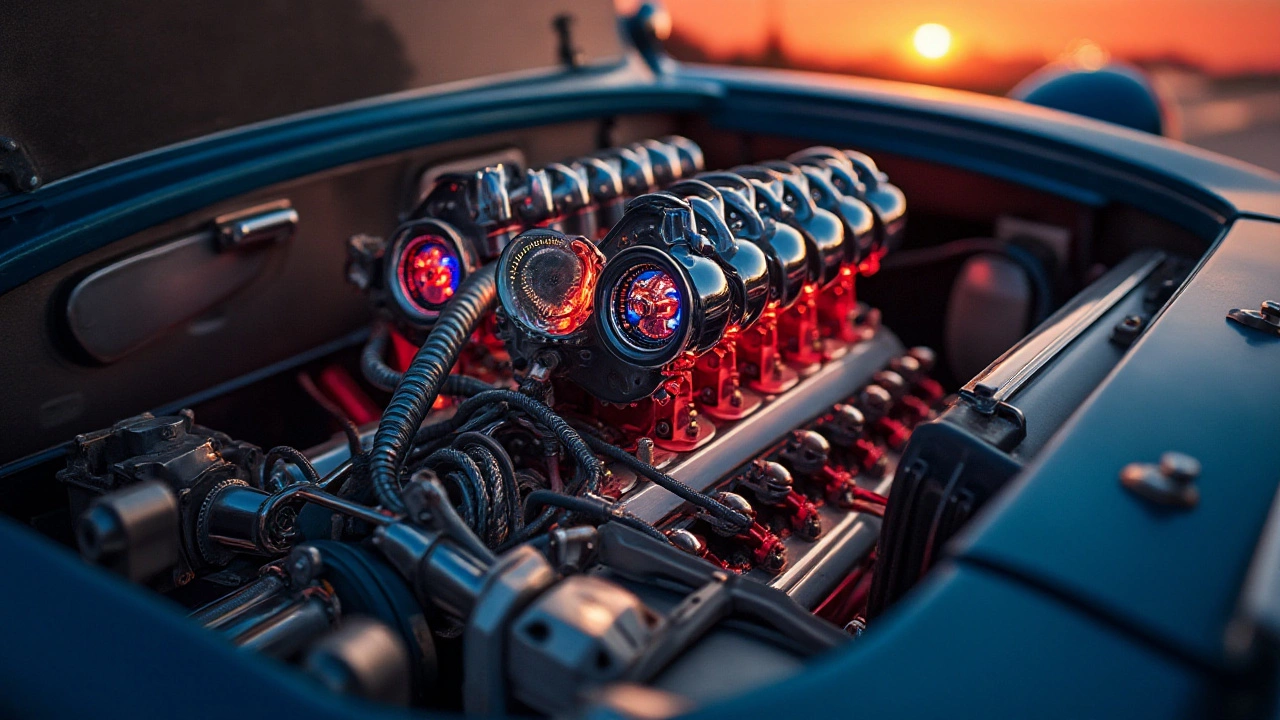
Choosing the Right Components
To make your car achieve that blistering exhaust flames effect, the right components play a critical role. Each piece of the puzzle contributes to the safe and effective creation of those vibrant bursts of fire.
Ignition Cut Systems
One of the first considerations is the ignition cut system. This is a setup that can interrupt or delay engine spark to allow unburnt fuel to enter the exhaust. When re-ignited, this fuel produces the desired fiery effect. Popular among tuners, an aftermarket ignition cut module is essential for anyone looking to safely control when flames occur, preventing potential engine damage.
Afterburner Kit
An aftermarket flame kit, or afterburner, is another component that can be added. These kits include spark plugs that mount at the exhaust's tip, igniting excess fuel in the exhaust stream. They are user-controlled and provide flames on command, which is convenient for demonstrations or controlled environments.
Fuel System Modifications
Adjusting the fuel system is another key element, often requiring different injectors or an adjustable fuel pressure regulator. By enriching the fuel mixture, you ensure there is enough unburnt fuel exiting the engine to sustain flames. Consider choosing components that are compatible with your car model and modifications to maintain engine efficiency.
Exhaust Modifications
The exhaust system itself must be robust and heat-resistant to endure the aftershock of flames. Stainless steel exhaust pipes are recommended as they withstand higher temperatures without degrading. It’s also wise to inspect and possibly upgrade gaskets and seals to prevent leaks and ensure system longevity.
ECU Tuning
For those looking to have precise control over the performance and safety of their setup, optimizing the Engine Control Unit (ECU) is crucial. Custom ECU maps can adjust ignition timing and fuel delivery to receive the best performance from your custom exhaust. Professional tuning ensures that you aren’t just shooting flames, but doing so with an efficient and safe engine.
| Component | Importance |
|---|---|
| Ignition Cut System | Manages spark timing for flame pop |
| Afterburner Kit | Ignites fuel at exhaust tip |
| Custom ECU Tuning | Optimizes engine performance and safety |
By carefully selecting and installing the right components, you can safely achieve the dramatic and head-turning ignitions that every automotive enthusiast dreams of without sacrificing your vehicle's longevity or safety.
Safety Measures and Precautions
Before you dive into flames-popping modifications, understanding the importance of safety cannot be overstated. The exhilarating sight of exhaust flames should never come at the cost of your car's integrity or your personal safety.
Fire Risks and Prevention
First and foremost, remember that you're dealing with raw flames, which inherently carry the risk of fire. Install flame arrestors within the exhaust system to prevent flames from traveling back into any part of your vehicle. Additionally, having a fire extinguisher on-hand in your car is not just smart—it's essential.
Engine Safety
Adjustments to fuel systems and ignition timing can lead to engine stress if not correctly executed. Ensure your engine is built to handle the additional fuel output; otherwise, it might suffer from "washing," where excess fuel dilutes engine oil and could lead to damage. Regular maintenance checks can prevent long-term harm.
Environmental Considerations
Bear in mind that not all jurisdictions welcome flame-throwing vehicles. Some areas have stringent laws against such modifications due to environmental and safety concerns. Always check local regulations before performing any custom exhaust changes.
DIY vs Professional Help
For those not mechanically inclined, remember that seeking professional assistance can be a wise choice. Professionals have the experience to install systems safely and ensure your car modification performs as expected without unexpected surprises.
- Consult with experienced tuners and mechanics.
- Use components from reputable manufacturers.
- Always test flame systems in a controlled and safe environment.
Never underestimate the value of preparation and education. If in doubt, always err on the side of caution, ensuring that your thrilling automotive exhibition leaves a lasting impression for all the right reasons.
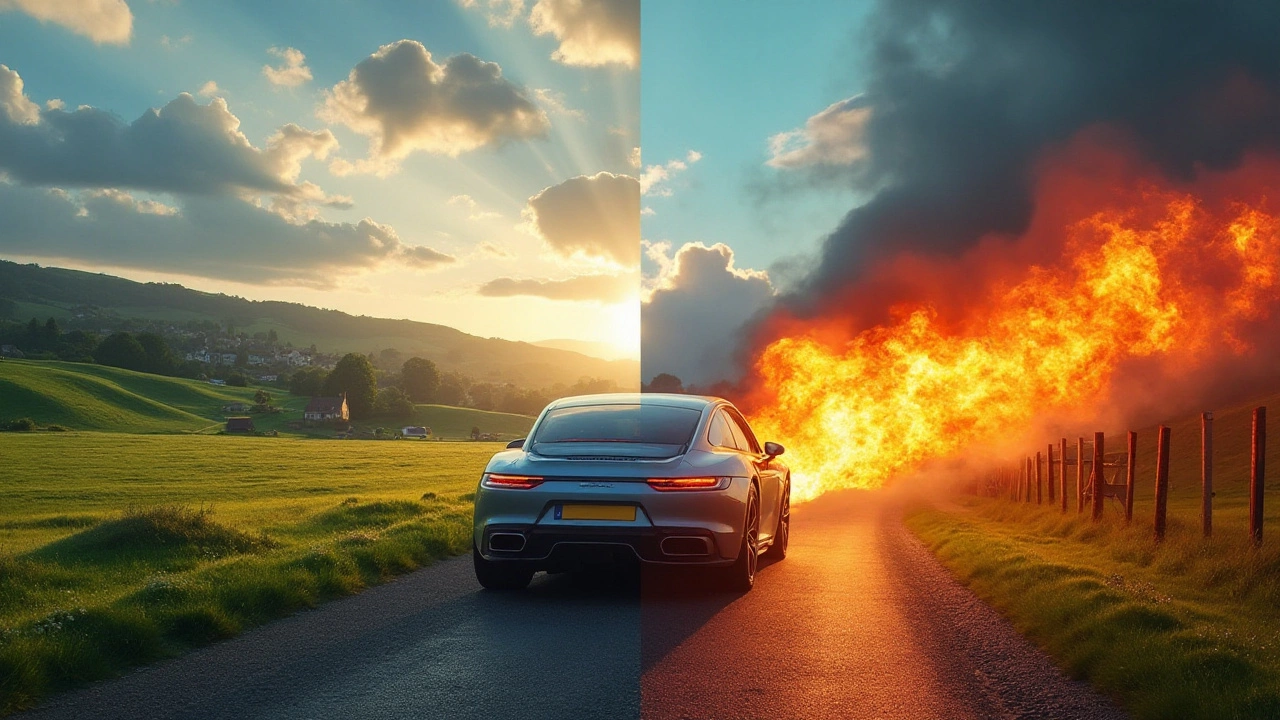
Real-world Tips and Advice
Bringing your dream of having exhaust flames to life can be thrilling, but there are certain tricks of the trade that can make the process smoother and safer. Here are some useful pointers to keep your project on track:
Tuning and Testing
Begin by understanding your car's current state. An engine that's already fine-tuned for performance will be easier to adjust for flame popping. Use a portable wideband air/fuel ratio gauge to accurately monitor the richness or leanness of your fuel mixture during tuning. Adjust your mixture to be slightly rich, which will provide more unburnt fuel to ignite in the exhaust.
Choosing Your Gear
Select a high-quality custom exhaust system that can handle the heat. Stainless steel is usually a good bet due to its durability and resistance to high temperatures. Consider an aftermarket ECU (Engine Control Unit) as it allows more precise control over timing and fuel management.
Fine-Tuning Ignition Timing
Retarding the ignition timing a few degrees is a common practice. This adjustment ensures that combustion is partially completed when the exhaust valve opens, allowing unburnt fuel to escape into the exhaust system ready to ignite and create a flame.
Safety First
If you're experimenting with flame tuning, safety should always be your top priority. Ensure you have a fire extinguisher within reach and that all exposed wires or components in the engine bay are insulated to prevent sparking. It's also wise to have a fire-resistant blanket on hand when testing for the first time.
Real Advice from the Pros
- Don’t ever run too rich for too long; it can damage catalytic converters and increase pollution.
- Consider consulting with a mechanic specializing in performance cars to get a second opinion on your setup.
- Choose a safe, open area for testing your flames, avoiding dry grass or flammable surroundings.
These nuanced suggestions reflect a careful balance between ambition and prudence. By following these tips, enthusiasts can achieve dazzling results without compromising on safety or vehicle integrity.

